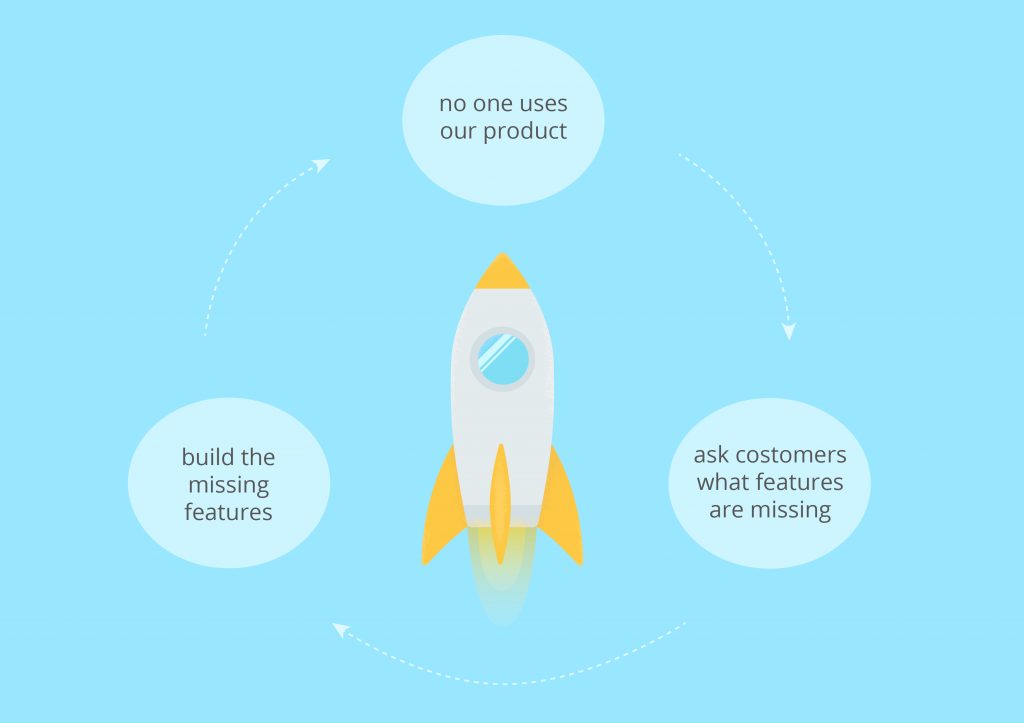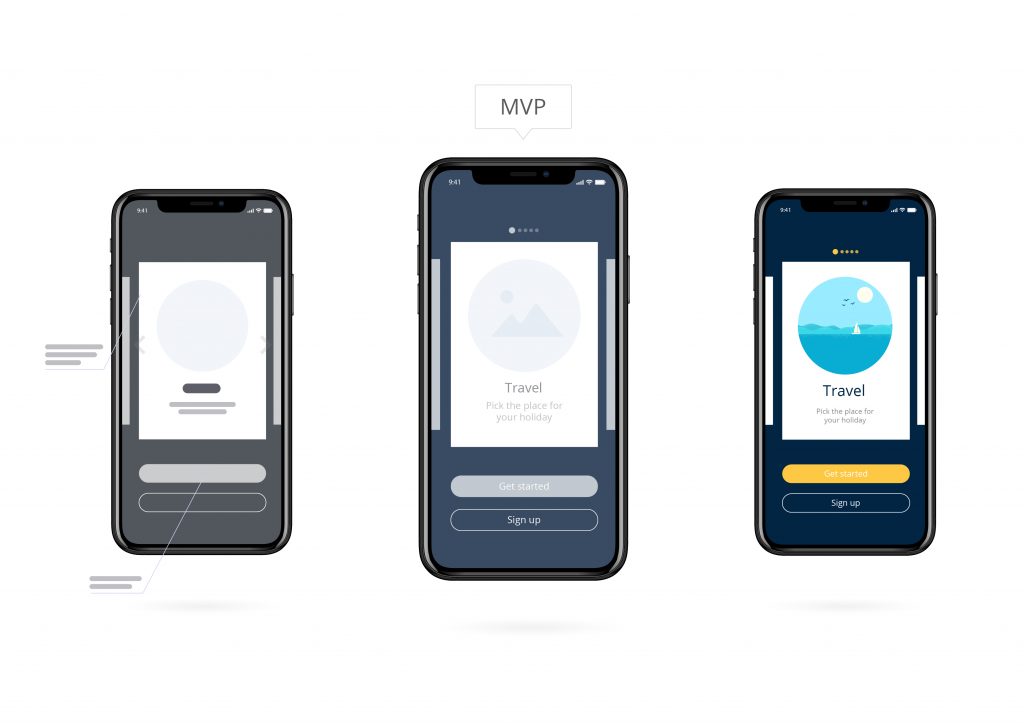How to Build a Successful MVP?

As an entrepreneur, you can be inspired by a great idea to create something. However, how will the market respond to it? How will you know if your product will eventually be purchased by many people?
The answer lies in validating your idea through the MVP development process. It is beneficial for designing, testing, and delivering your final product. Businesses need to avoid certain pitfalls while preparing to kick off a minimum viable product (MVP) for a web or a mobile app. Thus, it is vital to have a firm grasp on this concept.
In this article, we will share how to build MVP successfully.
What is an MVP?
MVP stands for the minimum viable product. In mobile development, app MVP refers to a basic version of an application. Thus, the MVP development process is a procedure by which a new product is built with core functionalities. The purpose here is to test the target audience’s response to it. After this step, an actual product with full features is developed.
Moreover, MVP is an essential element of a lean startup business model. This methodology states that there are several repetitive cycles of improvement in the IT product development process. How does it play out?
Here’s how Eric Ries, the author of Lean StartUp, defines the MVP: “The Minimum Viable Product (MVP) is that version of a new product which allows a team to collect the maximum amount of validated learning about customers with the least effort.”
Unpacking this definition, we can say that MVP product development presupposes validated learning about customers (i.e., you are learning about your potential customers, what they want) as they validate your idea (i.e. if they like it or want you to improve certain functionalities of it).
Purpose of creating an MVP

MVP development process helps to kick-start your idea toward reality quickly and with smaller costs. This approach is highly beneficial if you want to garner feedback from your potential users as well as incorporate it into your product’s future iterations. Through it, you will be able to find the right target audience, save time and use the best ideas based on valuable knowledge.
Building an MVP means figuring out the right balance between your business’ offers and customers’ needs. The purpose here is to put to the test all hypotheses (your ideas) and minimize errors along the way.
Steps for building an MVP
Here’s how you build an MVP:

1. Conduct market research
The ideas may be good, but they have to survive the harsh conditions of the market. Before you propose your new idea, be sure to identify your target user’s needs. Glean as much information as possible. And keep an eye on your rivals as well. Your task is to make your idea stand out.
Ask yourself: Who will be my target audience? Why is my product-idea unique? Use real statistics. Wishful thinking doesn’t help here.
2. Decide what problem you want to solve
What value is brought by your product? How can users benefit from your product? Keep these important questions at the forefront of your mind. You have to express your idea simply. You also should be crystal clear about the basic estimations of your product. MVP implies introducing something of value to the customers.
3. List the product’s features
You need to determine which features are most crucial and which ones are not. It could be helpful to have a scale from 1 to 10 for the increasing importance of the features. It would also be helpful to include information on the complexity of product implementation. Most importantly, in what ways is it beneficial for users? These questions are to be anticipated.
4. Build your MVP

After you are clear on the main features and know the real needs of the market, you are ready to create your MVP (or hire a responsible team to do that). A prototype should be of high quality, user-friendly, engaging, and suitable for your potential customers.
5. Build, measure and learn
First, the amount of work needs to be determined; then the product is ready for the development process. After the prototype of your product is built, it needs to be tested. Quality Assurance (QA) engineers start running the first series of tests.
After your MVP is launched, do a thorough review (i.e., gather your potential customers’ feedback prior to the release). Their reaction can help you determine if the product is well-received in the market and can compete with other products.
It is crucial to grasp that users are your friends. They can inform you about how to improve your product. Some features might not be needed. Your product might lack an important feature.
Pay attention to what they have to say to you. Once you collect enough information from them, start improving your product-idea. Rerun tests again, learn from testing and analyze the quality, and then do more tests again. This process needs to be repeated until your product is finalized.
NB:
- Hang on every word of your users
- You are building products, not for your good per se, but the user’s benefit
- Be intentional and inquire of your users about what they want
Measuring the success of your MVP
Here are some tips on how to give a serious assessment of your product’s future success:
- Verbal communication
You can conduct interviews with potential customers. Kick this off by envisioning the issues that a customer is encountering or might encounter, and just ask for their opinion.
- Sign-up
Sign-ups are a tangible way to assess user interest.
- Better client appraisals based on the feedback
If your app is downloaded and launched time and again, then customers are interested in your product.
- Percentage of active users
Monitoring download and launch rates is necessary. However, you can also evaluate the success of an MVP by studying users’ behavior. Try to check your active users’ ratings regularly.
- Churn
It gives you the number of people who stopped using your app or uninstalled it. Churn = Number of users at the beginning of the week or month/Number of churn per week or month.
Conclusion
MVP can be compared to a trial balloon. It helps to forecast a commercial and technical potential of your product’s vision as well as its delivery. It enables you to make technical and business decisions on the basis of factual information rather than mere speculations. Thus, the key objective of building a successful MVP is wrapped in the idea of testing the concept or the product in the market.
We are ready to build an MVP for your project. In need of consultation? Drop us a line – info@roigenius.com
Content created by our partner, Onix-systems.
 Home
Home